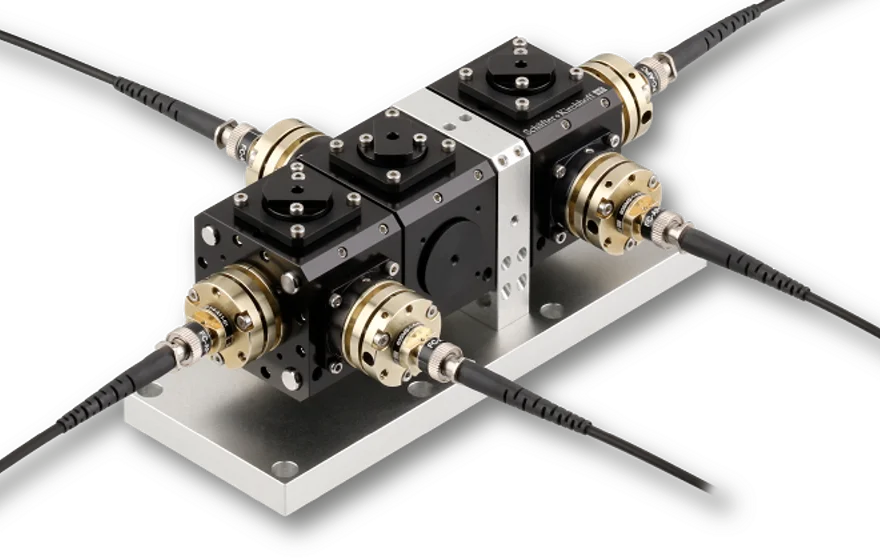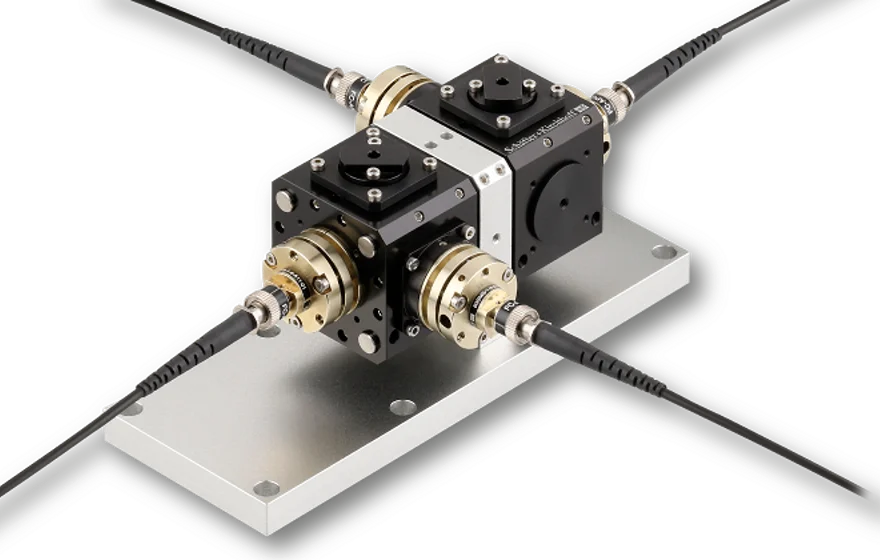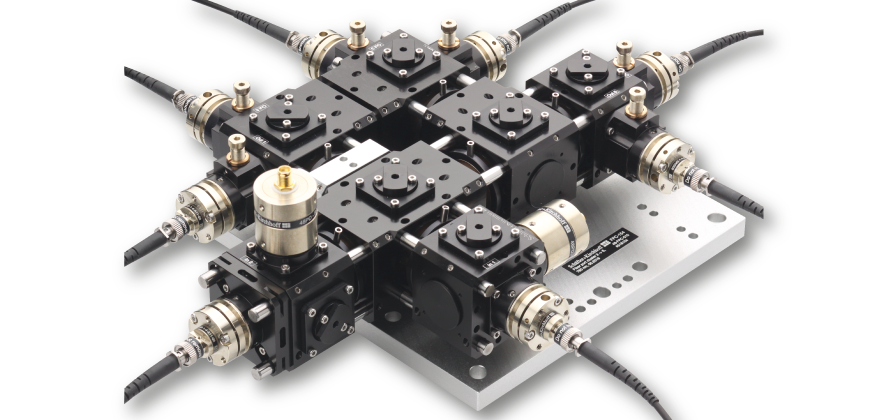Features
Dichroic RGB Beam Combiner- Configuration with 2, 3 or 4 input ports
- Based on dichroic long-pass or short-pass mirrors
- Large variety of edge wavelengths
- Highly efficient coupling into polarization-maintaining or single-mode fiber cables
- Compact, rugged, transportable and sealed opto-mechanical units
- Fully fiber-coupled
- Very high long-term stability, efficiency and reproducability




